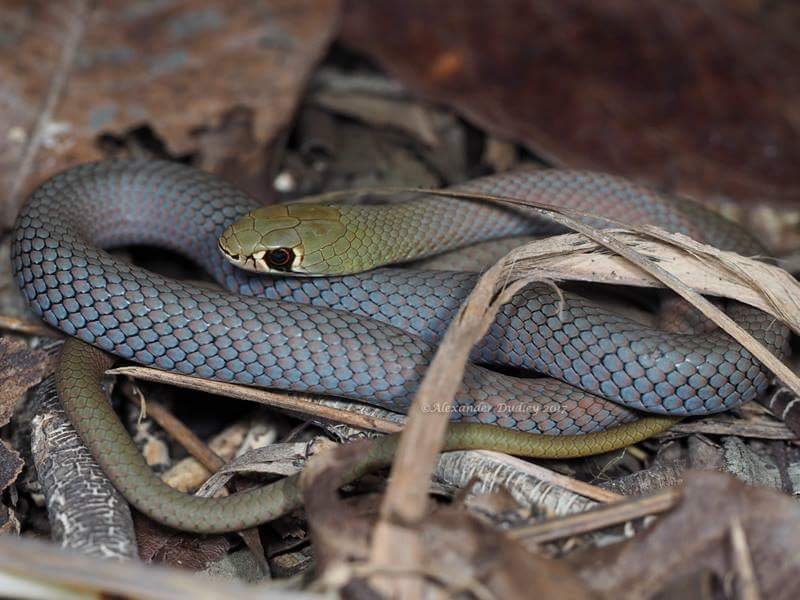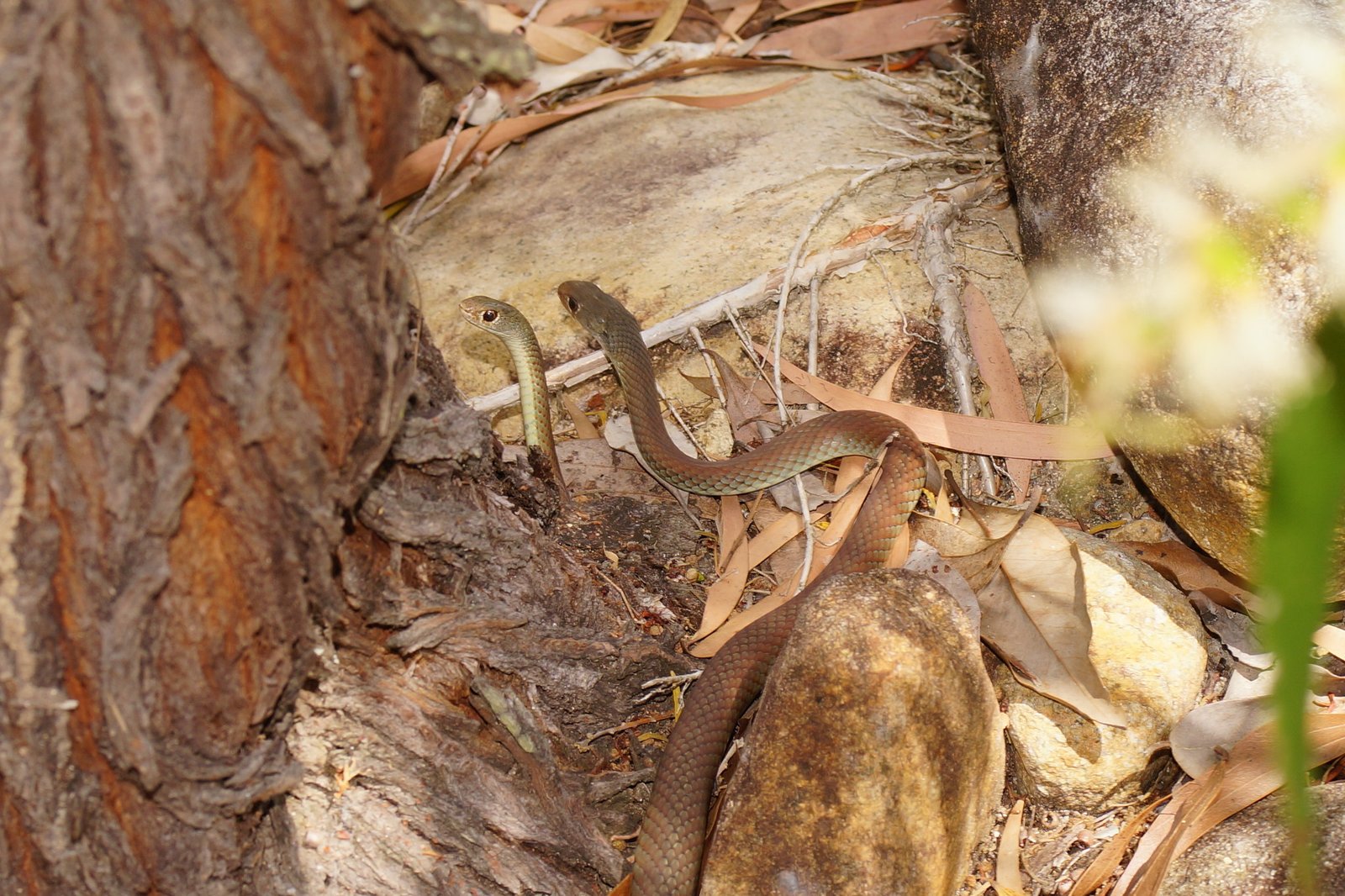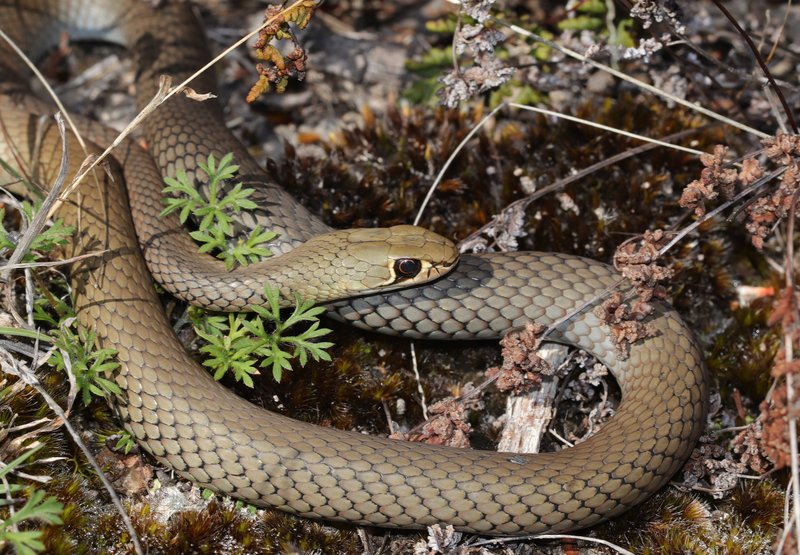Yellow-faced Whip Snake
Introduction
The Yellow-faced Whip Snake is a slender and fast-moving snake, active during the day. It is common throughout most of Australia. It is often confused with the Eastern Brown Snake, and it is hard to observe closely, being alert and fleeing quickly when disturbed.
What do Yellow-faced Whip Snakes look like?
Identification
It is pale grey to brown in colour, with reddish colouring on the head, and sometimes on the tail as well. The belly is grey-green to yellowish. A dark comma-shaped streak runs from the eye to the corner of the mouth. The face is usually but not always yellowish, with a narrow, yellow-edged dark bar around the front of the snout from nostril to nostril. The average length is 80cm, with a maximum of 1m. Males are larger than females. It can be distinguished from the Eastern Brown by its facial markings, and smaller size.

© CC BY-NC 4.0
Where do Yellow-faced Whip Snakes live?
Habitat
The Yellow-faced Whip Snake is found in a wide range of habitats, except swamps and rainforest, from the coast to the arid interior.
Distribution
The Yellow-faced Whip Snake is common throughout most of Australia.
What do Yellow-faced Whip Snakes eat?
Feeding and diet
The Yellow-faced Whip Snake feeds mainly on small diurnal lizards, as well as frogs and lizard eggs. They have good eyesight, and can chase and capture lizards on the run.
Specimen in our collection
View microCT scans of a Yellow-faced whipsnake (Demansia psammophis) from the Australian Museum Herpetology Collection (specimen AM R.200485). Learn more about microCT scanning and how it is used by the Australian Museum Research Institute.
What is the life cycle of Yellow-faced Whip Snakes?
Life history cycle
The Yellow-faced Whip Snake lays eggs in early summer in the south of its range, with clutches of 5-20 eggs (the average is six) being recorded. Communal egg-laying of up to 200 eggs, in deep soil or rock crevices, has also been reported.
Seasonality
During winter the Yellow-faced Whip Snake may shelter beneath rocks, and has been observed aggregating with several other individuals on occasion.

© CC BY-NC-SA 4.0
Are Yellow-faced Whip Snakes dangerous to humans?
Danger to humans
The Yellow-faced Whip Snake is a venomous snake, but is not considered dangerous. However, a bite could be extremely painful, with much local swelling.
References
- HG Cogger. 1992. Reptiles and Amphibians of Australia. Reed Books.
- H Ehmann. 1992. Encyclopedia of Australian Animals: Reptiles. Angus & Robertson.
- K Griffiths. 1997. Frogs and Reptiles of the Sydney Region. UNSW Press, Sydney


